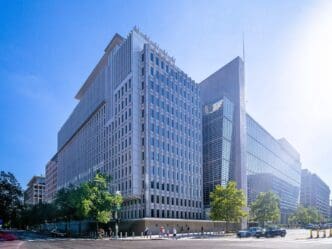The World Bank has issued a warning that the 2020s could experience the slowest economic growth since the 1960s, attributing this downturn primarily to tariffs. The organization highlights that the global GDP growth rate is expected to decrease significantly due to these trade barriers, with forecasts indicating a reduction to 2.3 percent this year, marking the weakest performance in 17 years, aside from full-blown global recessions. The average global GDP growth for the 2020s is projected to be just 2.5 percent, the lowest of any decade since the 1960s.
World Bank economists emphasize the need for urgent measures to counteract this trend. They suggest three paths to stimulate growth: restoring trade relations, reducing fiscal deficits, and boosting employment. A reduction of tariffs by half from their current levels could elevate global GDP by 0.2 percent this year and next. Additionally, addressing fiscal deficits is crucial, as these have averaged nearly 6 percent in developing economies so far this decade, the highest this century.
The economists also underscore the importance of job creation, particularly in developing regions like South Asia and sub-Saharan Africa, where working-age populations are expected to increase significantly. The World Bank’s cautionary stance aligns with the Organization for Economic Co-operation and Development (OECD), which has also lowered its GDP forecasts. The OECD now predicts only 1.6 percent growth for the United States in 2025, down from an earlier estimate of 2.6 percent. Similarly, the Federal Reserve’s projections for U.S. GDP growth remain modest, with forecasts set at 1.7 percent for 2025 and 1.8 percent in the long term.
President Donald Trump’s trade policies, including tariffs, continue to be a point of negotiation. As the 90-day pause on his “Liberation Day” tariffs nears its end, various countries are seeking to renegotiate trade agreements to avoid steep import duties. While the impact of tariffs on the U.S. economy remains debated, with consumers and small businesses expressing uncertainty, the labor market has shown resilience, adding 139,000 jobs in May.








